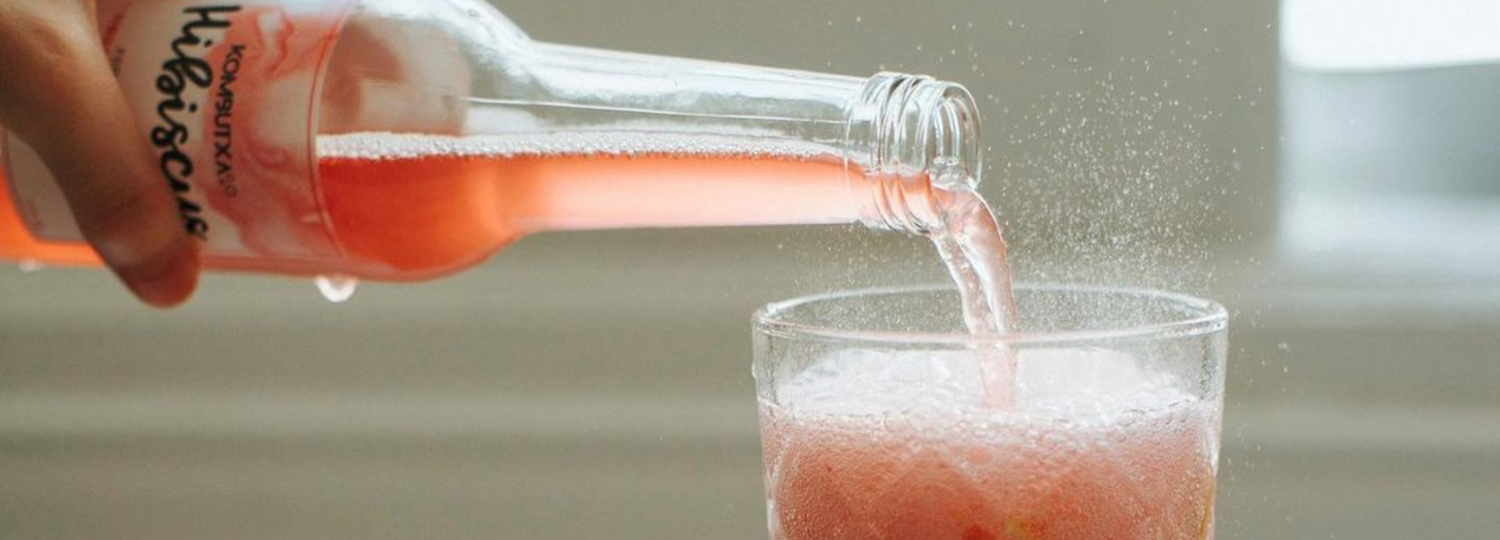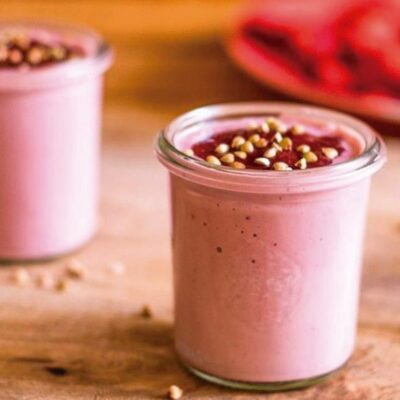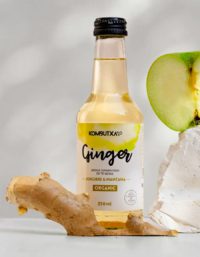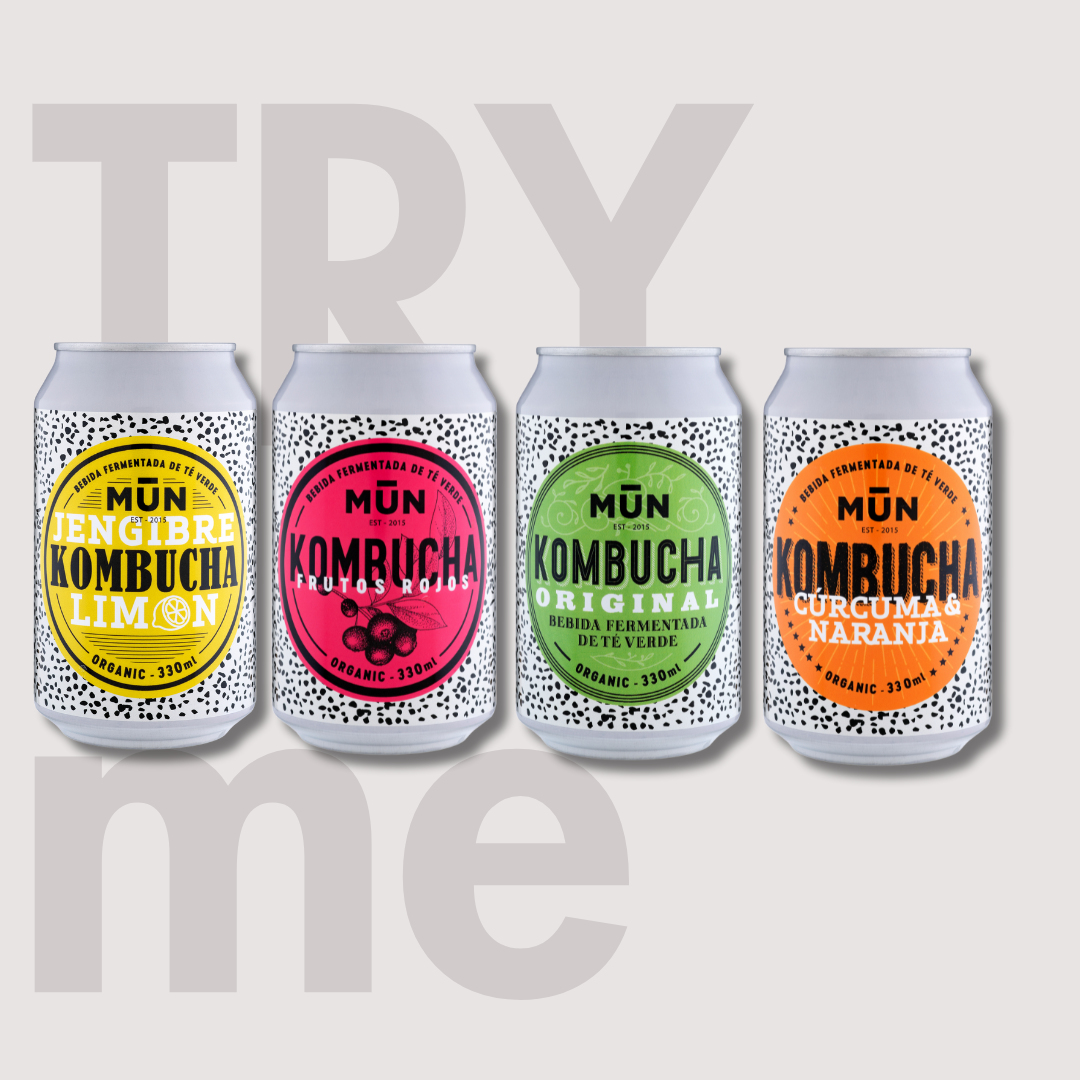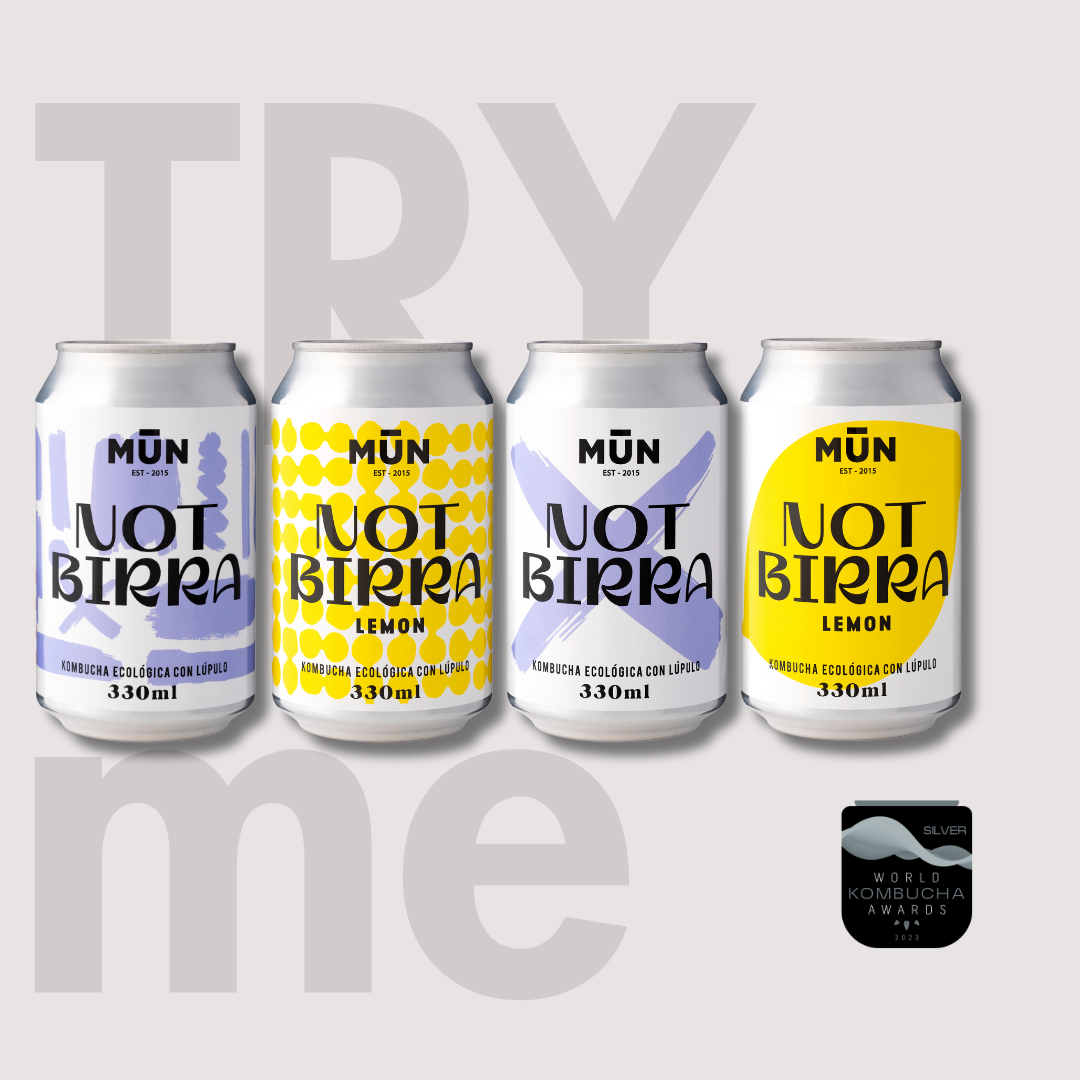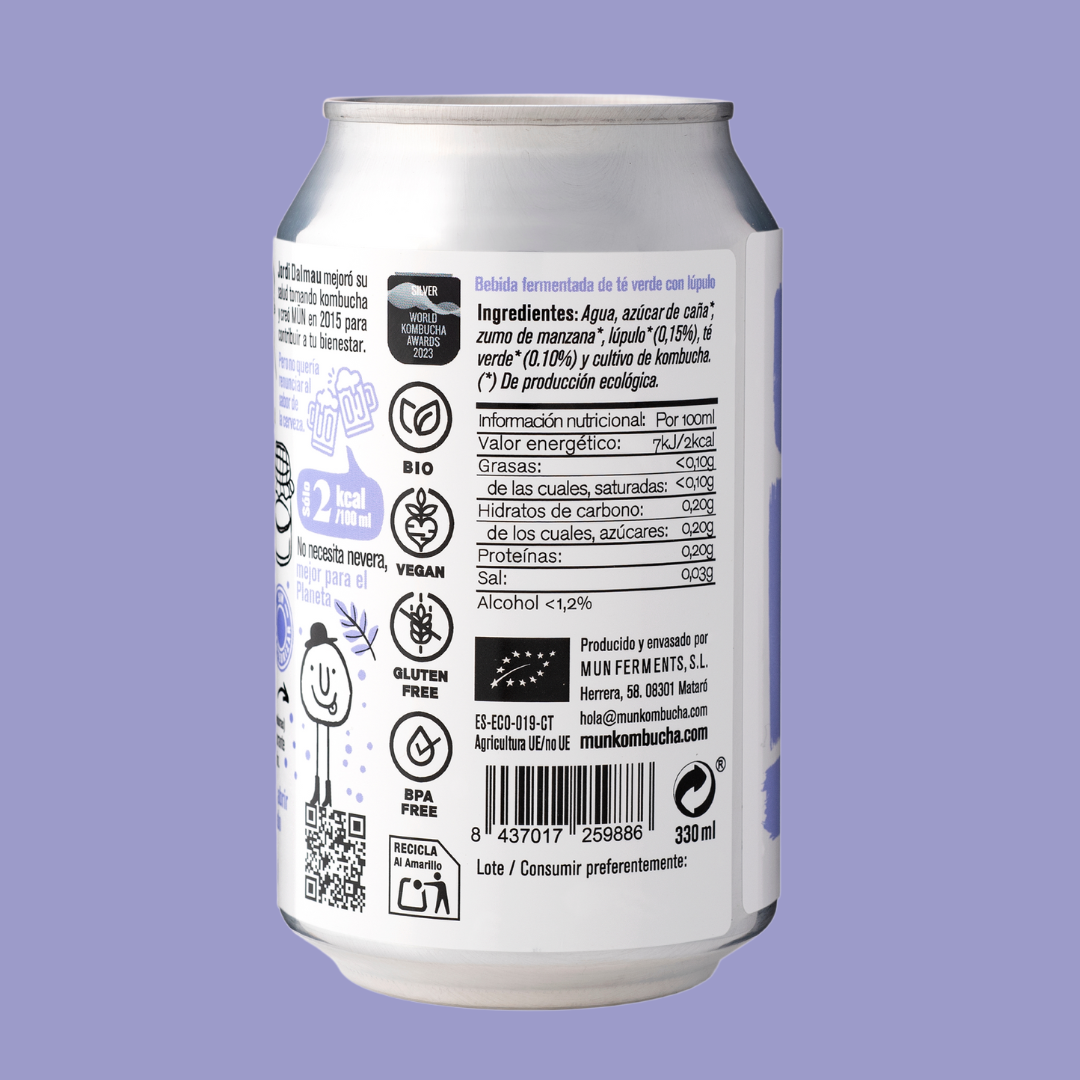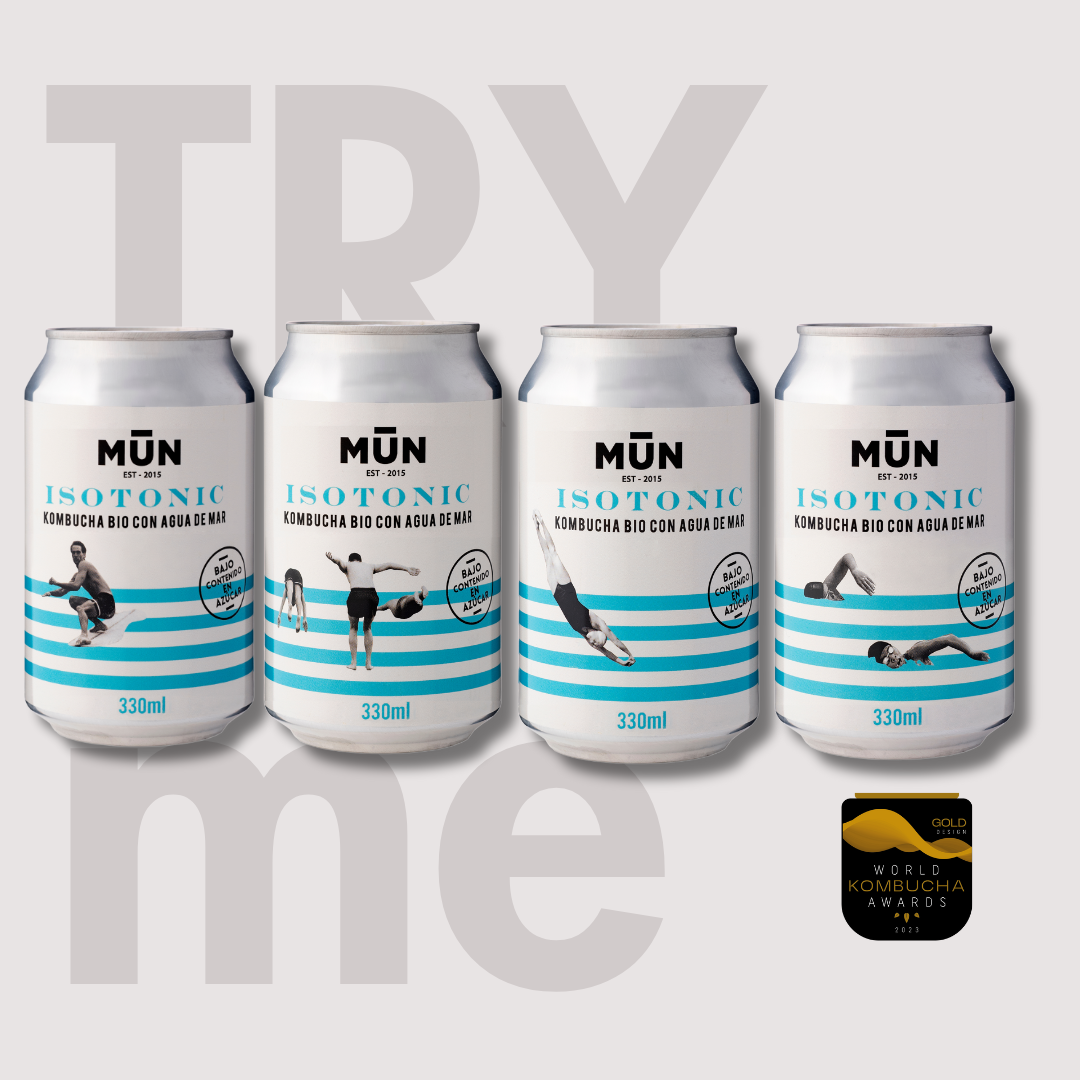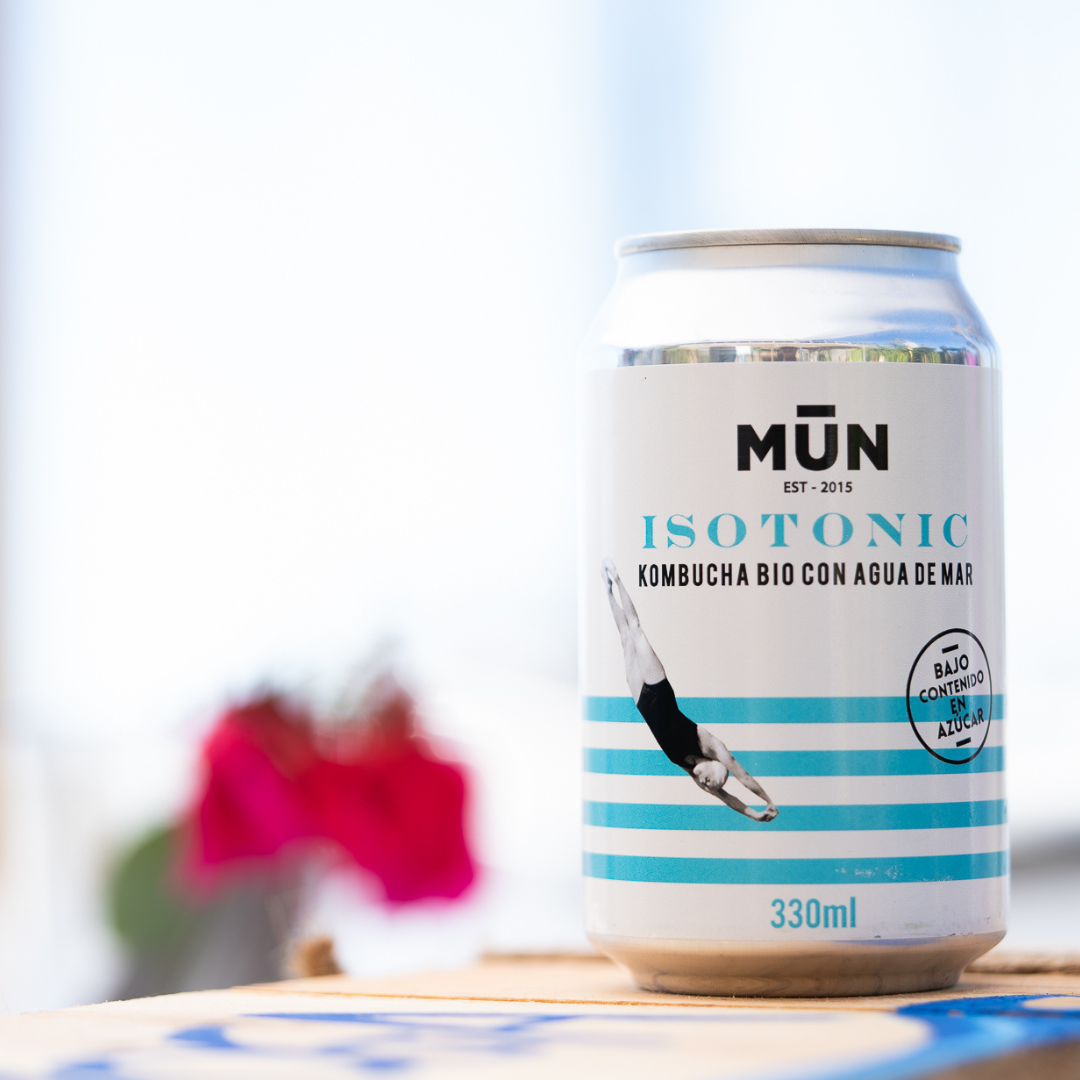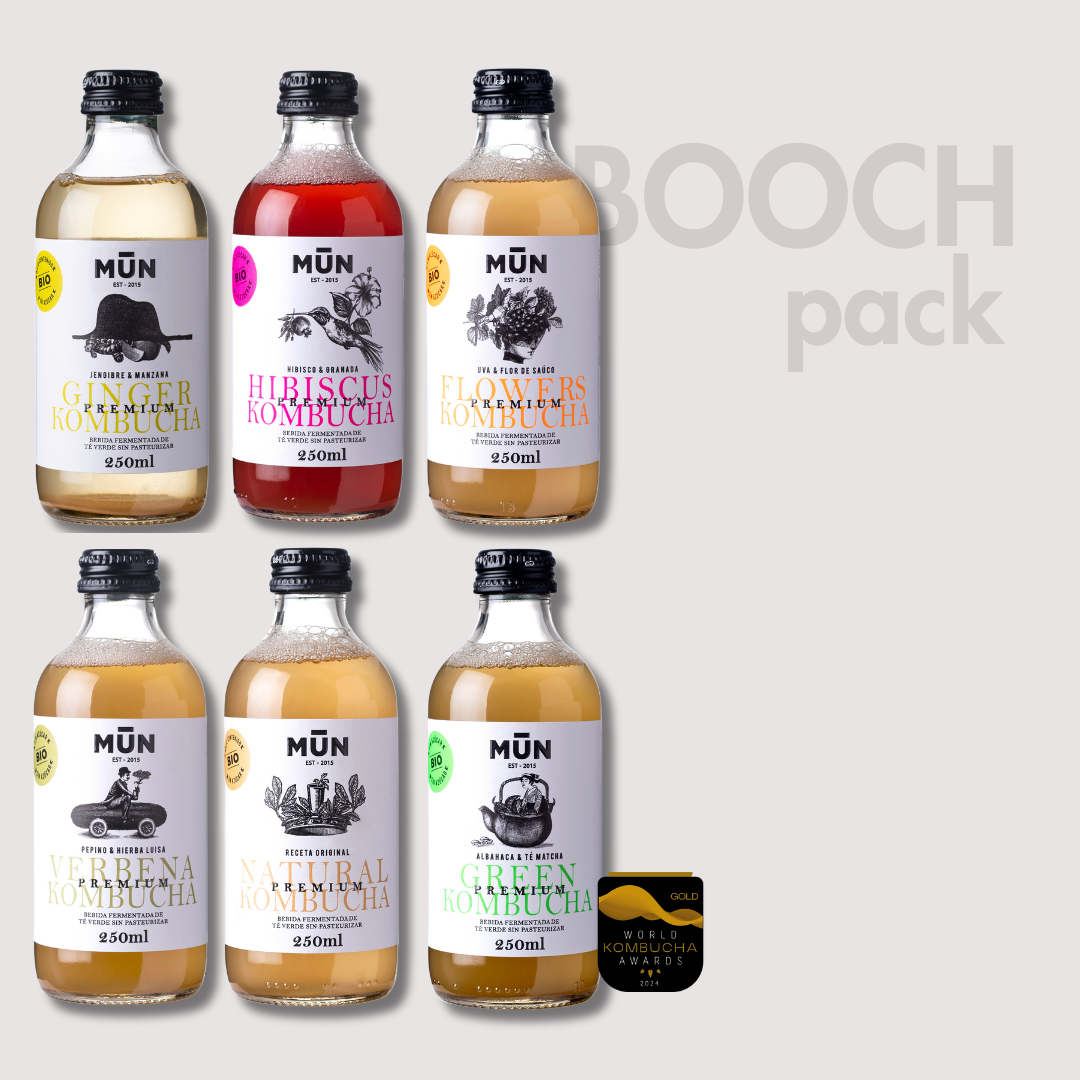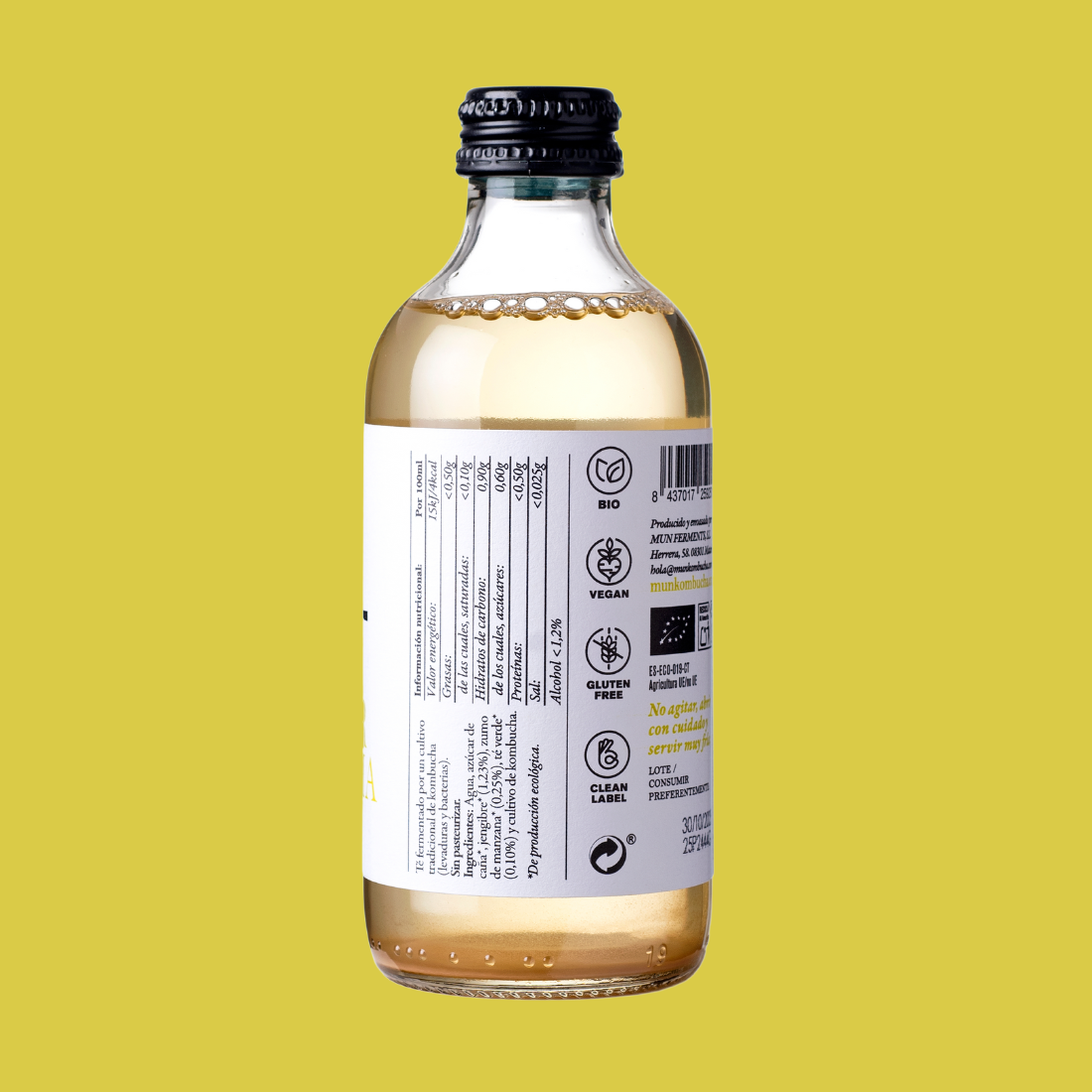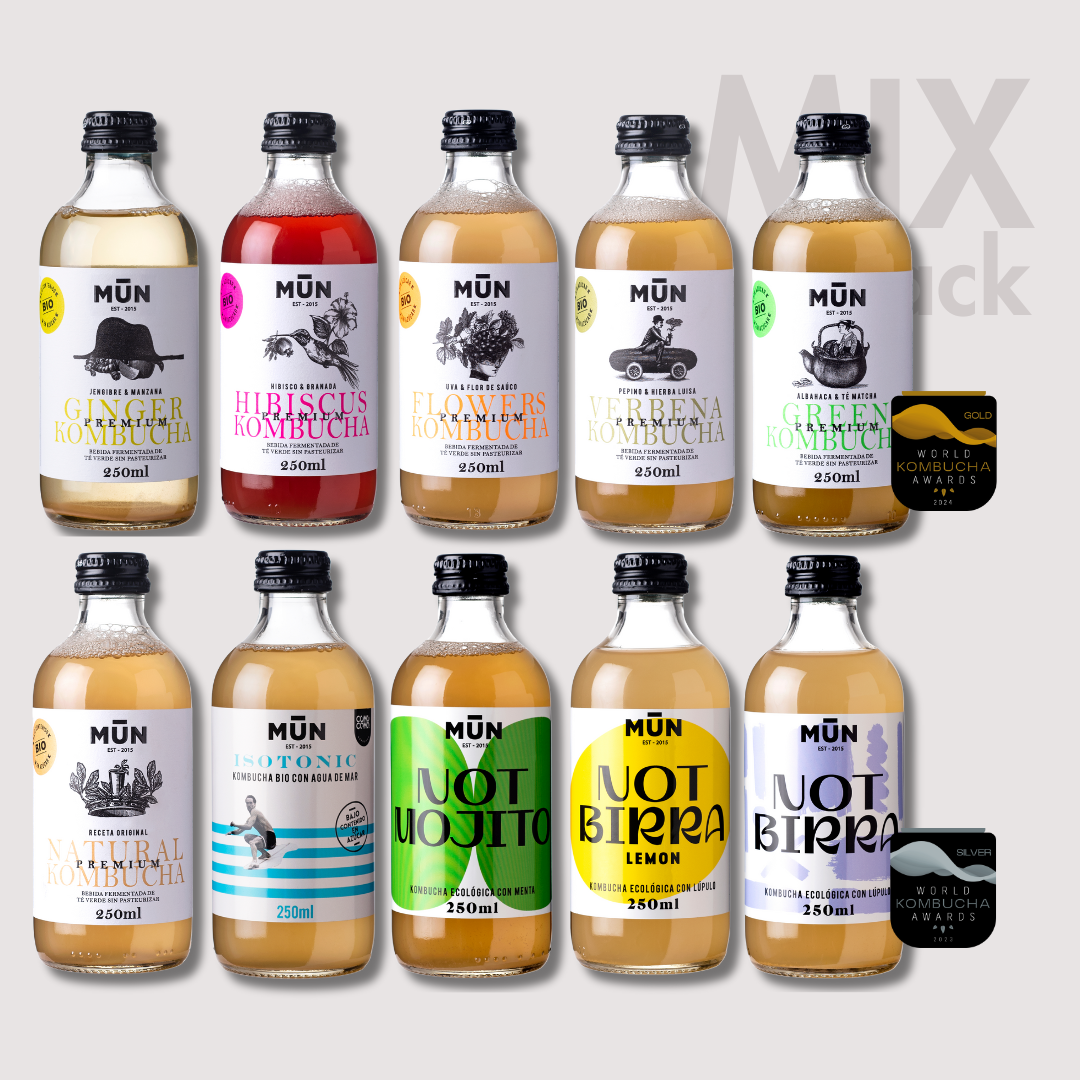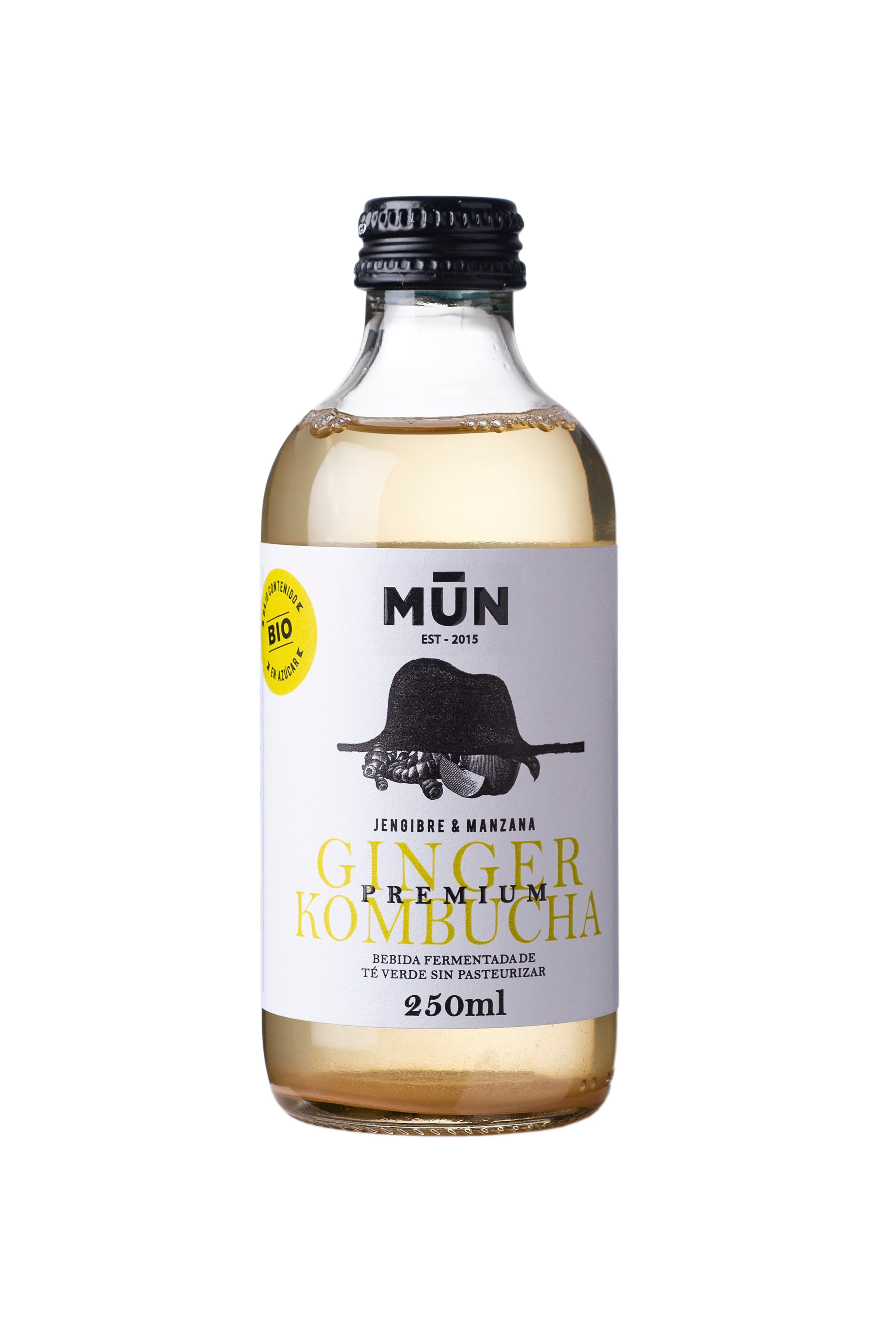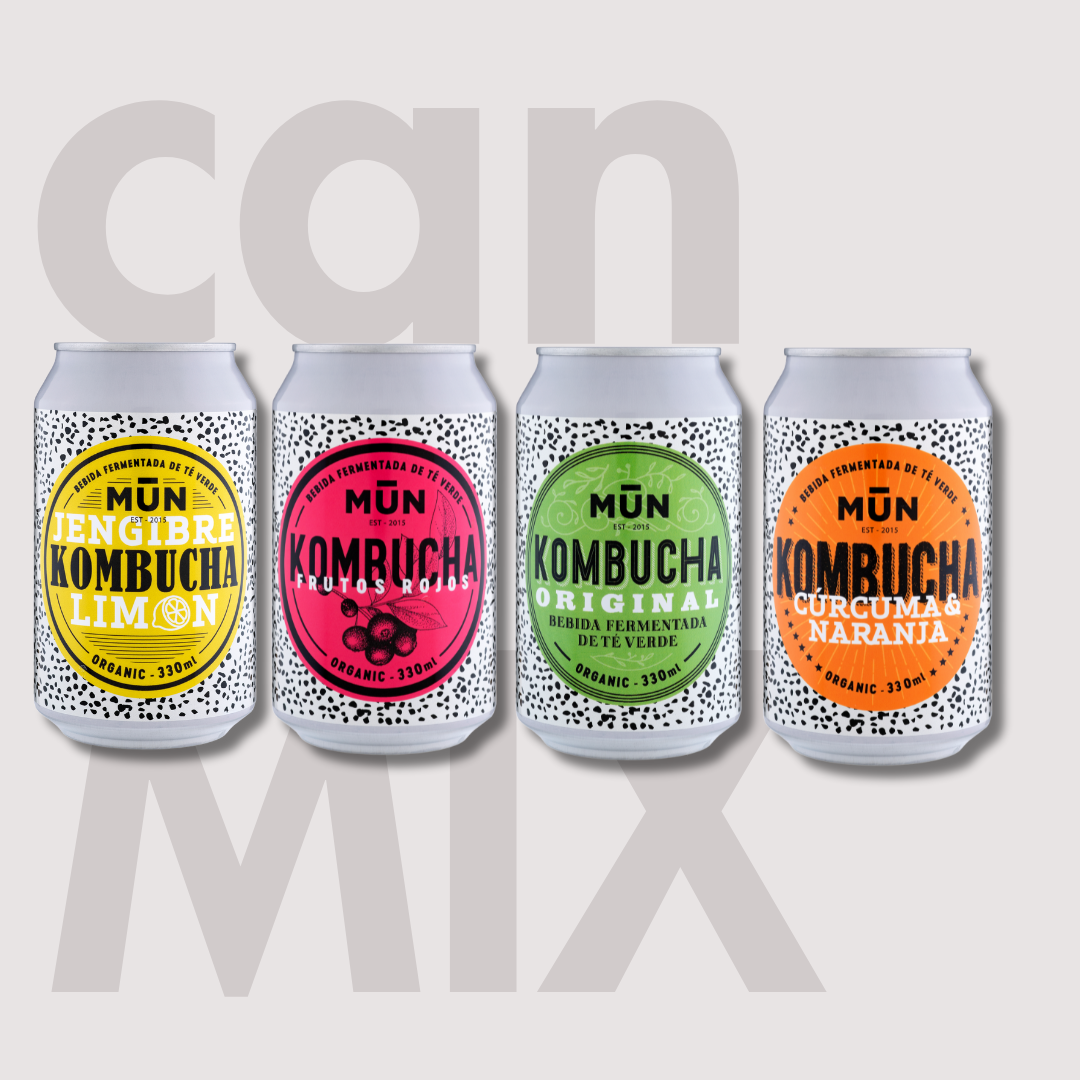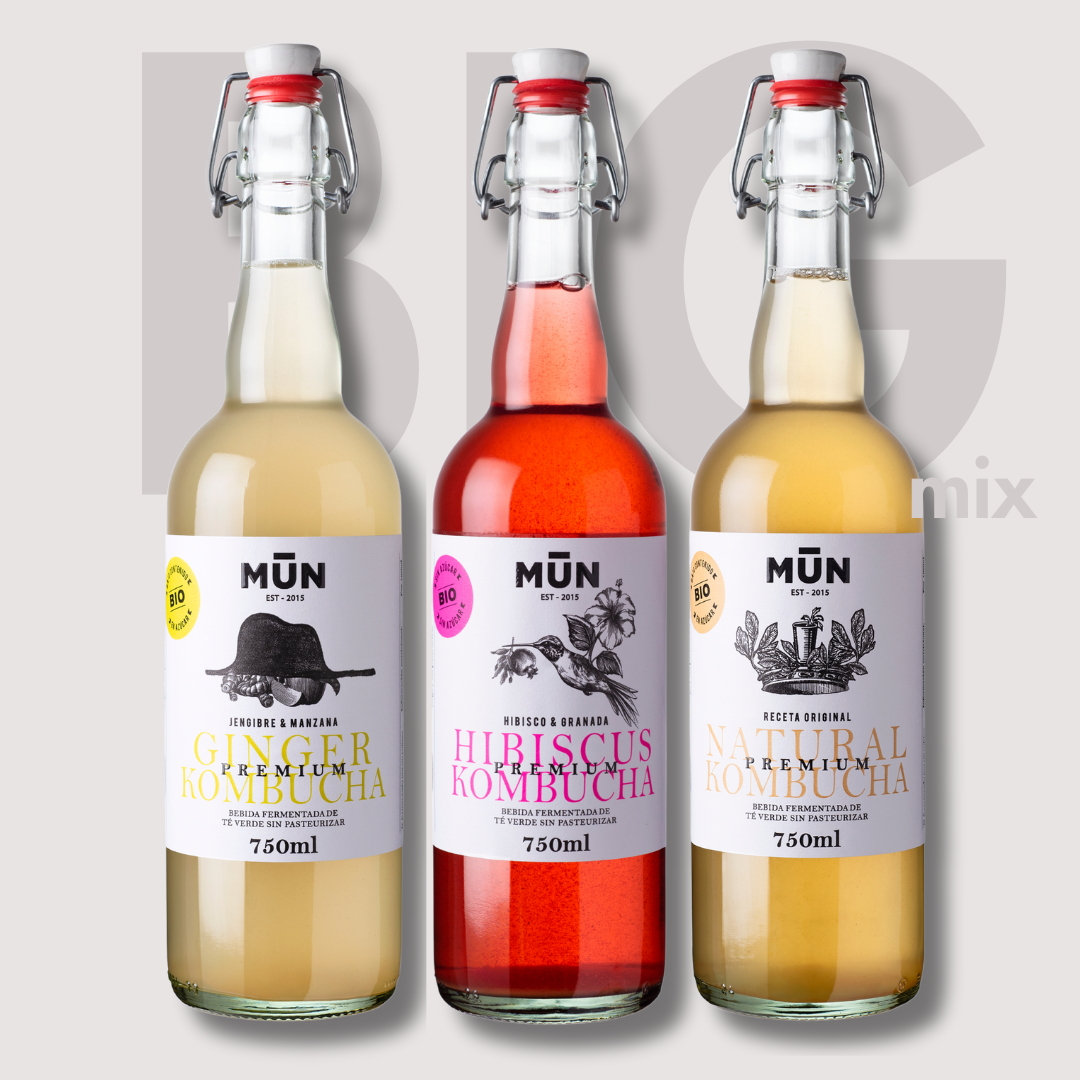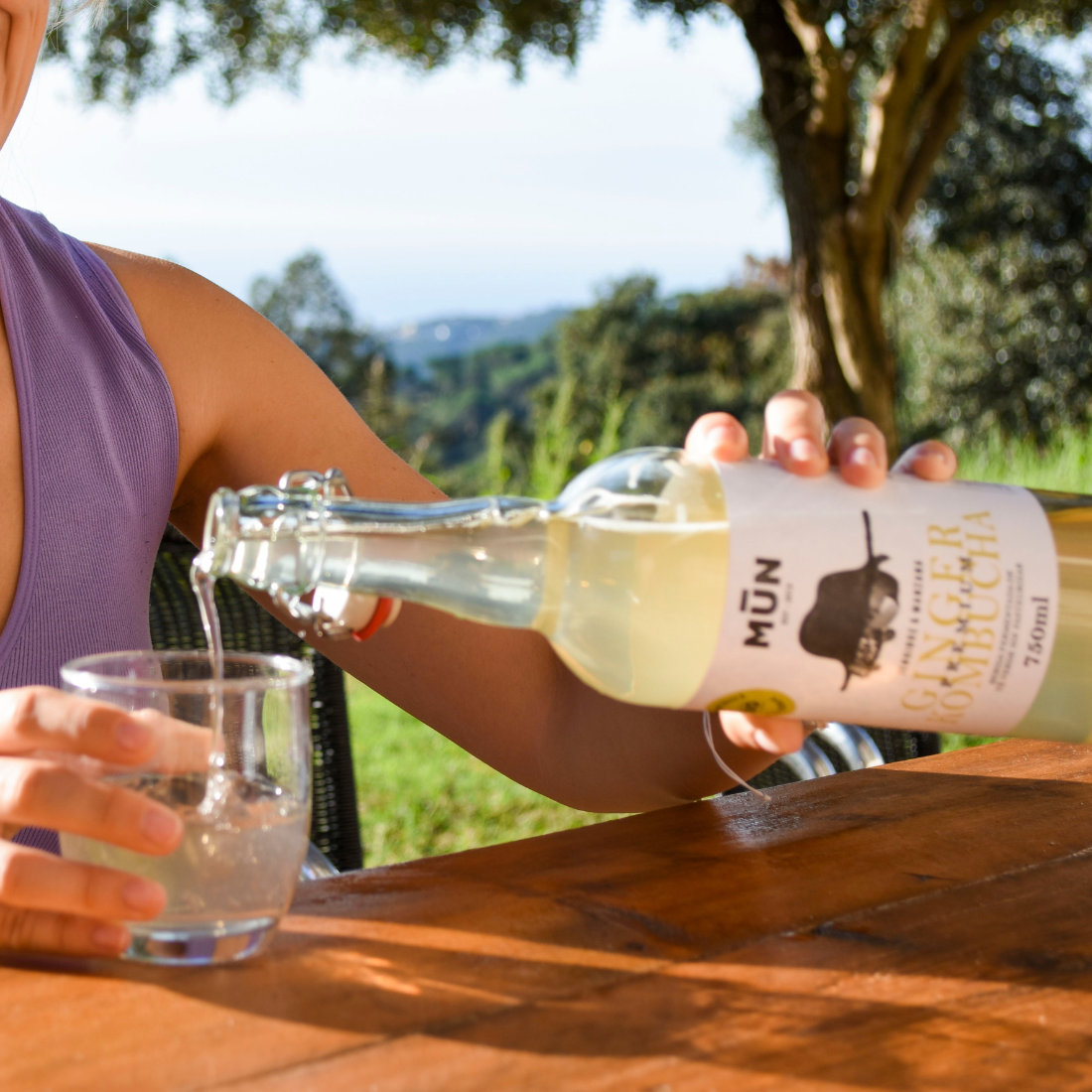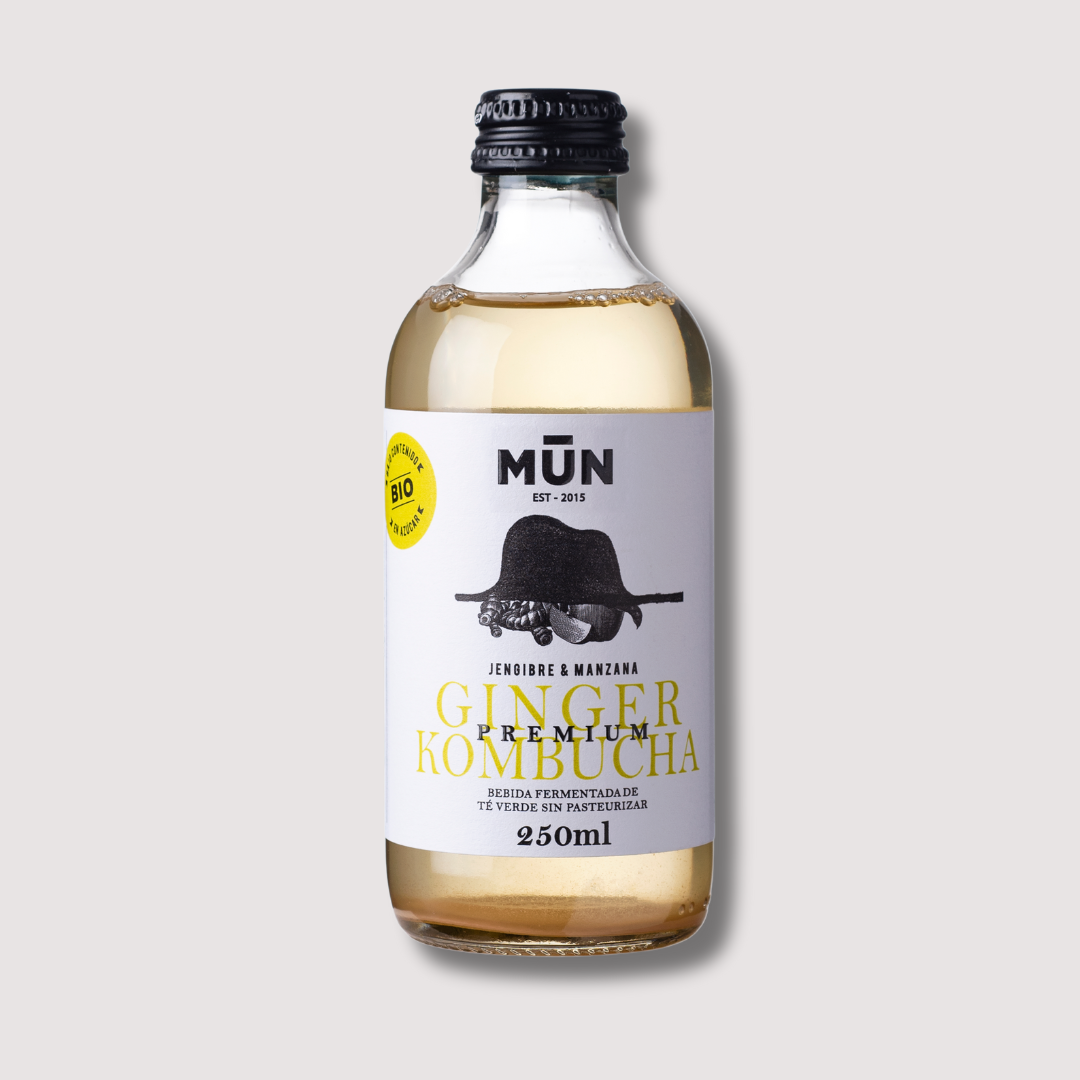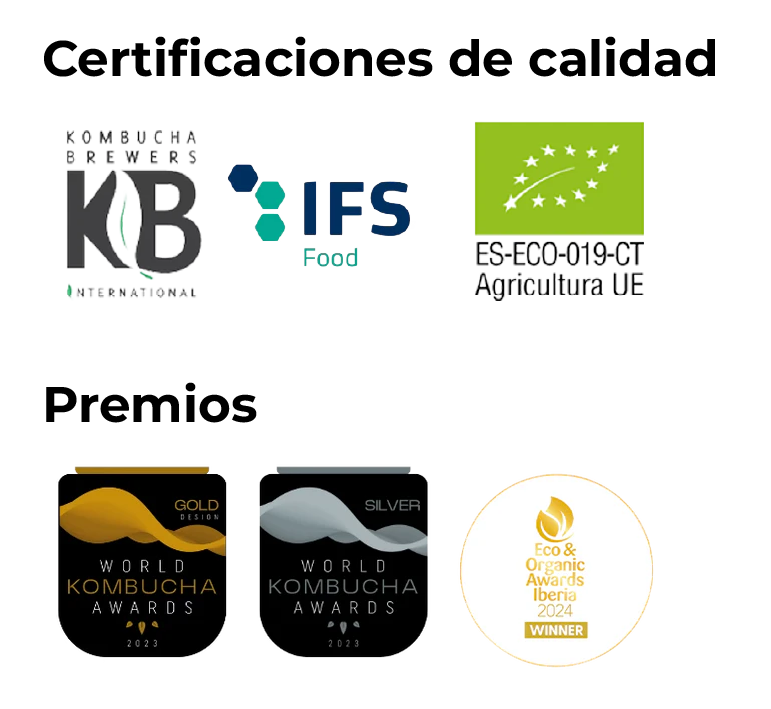If you're a fan of hibiscus-flavored kombucha, then you might be interested in learning a little more about this beautiful plant. . Hibiscus It is a species of perennial or annual plant that belongs to the family of Malvaceae (yes, like cotton and okra!).
There are many different species of hibiscus, each with its own distinctive characteristics. Some of the best known species include Hibiscus rosa-sinensis , which has large, showy flowers in shades of red, pink and white, and Hibiscus sabdariffa , which is grown for its edible calyxes and used to make hibiscus tea and the refreshing drink "Jamaica water."
Around the world, hibiscus has traditionally been used to treat various health problems, thanks to its richness in vitamin C, antioxidants and ascorbic acid. It has also been shown to have antibacterial properties and can help reduce inflammation and oxidative stress.
If you're wondering why hibiscus is such a popular ingredient in making kombucha, the answer is simple: it's delicious! Additionally, hibiscus may provide additional health benefits, such as improving digestion and adding antioxidants and anti-inflammatory properties to your favorite fermented beverage.
Where it grows
Hibiscus is a plant native to Africa, but today it is grown in many parts of the world due to its beauty, flavor and health benefits. Hibiscus species are distributed in subtropical and tropical regions of Africa, Asia, North and South America, Australia, and the Pacific Islands.
Some of the major hibiscus producers are Sudan, Senegal, India, Thailand, Mexico and Egypt. In these countries, hibiscus is grown for both ornamental use and food and medicinal use.
In many places, you can also find hibiscus growing wild in natural environments. For example, in the United States, the most common native hibiscus is the Hibiscus moscheutos , found in wetlands on the east coast and south.
Varieties

There are many varieties of hibiscus, each with its own unique characteristics in terms of color, size, shape and flavor. These are the most popular hibiscus varieties:
- Hibiscus rosa-sinensis : This is one of the most popular hibiscus species worldwide. It is also known as "China flower" or "rose flower." It has large, showy flowers in shades of red, pink and white, and is often grown as an ornamental plant.
- Hibiscus syriacus : This species is commonly known as "althea" or "angel grass." It has large, purple, pink or white flowers and is often grown as an ornamental plant.
- Hibiscus sabdariffa : This species is grown for its edible calyxes, which are used to make hibiscus tea and the refreshing drink "Jamaica water." The calyxes have a sour taste and a dark red color.
- Hibiscus acetosella : Also known as “African sorrel,” this species is grown for its edible leaves and showy flowers. The leaves have a tart flavor similar to blueberries and are used in African cuisine.
- Hibiscus moscheutos : This is the most common native hibiscus species in the United States. It has large, showy flowers in shades of pink, red or white and is commonly found in wetlands on the eastern and southern coast.
- Hibiscus coccineus : This species is known as “marshmallow” because of its marshmallow-like leaves and flowers. It has large, red flowers and is commonly found in swamps and wetlands.
The Chinese rose
Although the hibiscus and the Chinese rose belong to the same family and share similar characteristics, it is important to note that they are not the same. The main difference between both plants lies in their leaves and branches: the hibiscus has pointed leaves and woody branches, while the Chinese rose has oval leaves and more flexible and thorny branches. Furthermore, although both plants are used in medicine and gastronomy, their properties and benefits are different. Hibiscus is known for its ability to lower blood pressure and strengthen the immune system, while Chinese rose is primarily used to improve skin health and reduce inflammation.
The rose of Syria
The Syrian rose, also known as Syrian hibiscus or Jamaica flower, is actually a variety of hibiscus, specifically Hibiscus syriacus. Although it shares some characteristics with the common hibiscus, such as its large, colorful flowers, it also has differences, such as the shape of the leaves and the structure of the plant. Additionally, Syrian rose is known for its own properties and benefits, such as its ability to relieve cough symptoms and reduce inflammation in the body.
Nutrients
Hibiscus is a flower highly valued not only for its beauty and flavor, but also for its nutrients beneficial to health. This flower contains a large amount of antioxidants, including ascorbic acid (vitamin C) and polyphenols, which help protect the body against harmful free radicals. It is also rich in flavonoids, which have anti-inflammatory properties and can help reduce blood pressure and blood cholesterol. Additionally, hibiscus is a good source of vitamin A, iron, calcium and other essential nutrients that help maintain good bone, eye and immune system health.
Benefits
It is a flower with many health benefits, thanks to its antioxidant and anti-inflammatory properties and its nutritional content. This flower has been used in traditional medicine for centuries, and has been shown to help treat various conditions. Some of its health benefits include reducing blood pressure, improving blood lipid profile, preventing heart diseases, reducing oxidative stress, improving digestion, strengthening the immune system and protecting the skin against sun damage. Additionally, hibiscus may also be beneficial for weight loss as it helps reduce appetite and promotes fat burning. Overall, hibiscus is a versatile and beneficial flower that can improve health in several ways, and consuming it as a tea, juice, or supplement is a great option for those looking to improve their well-being naturally.
Hibiscus flower properties
Hibiscus is a flower with many beneficial health properties, thanks to its nutritional content and the bioactive substances it contains. This flower is rich in antioxidants , which gives it properties anti-inflammatory and anti-aging . It is also a good source of vitamin C, iron and other essential nutrients that help maintain good health. Additionally, hibiscus has been shown to have properties diuretics , which can help treat fluid retention and reduce swelling. It is also beneficial for cardiovascular health , as it helps reduce blood pressure already improve lipid profile in blood Additionally, hibiscus has been shown to have properties antibacterial and antiviral , making it useful for preventing and treating infections.
What do scientific studies say about the properties of hibiscus?
Hibiscus infusion, also known as hibiscus tea, has several benefits. According to a randomized, double-blind, placebo-controlled clinical trial, drinking hibiscus tea can reduce blood pressure in prehypertensive and mildly hypertensive adults. [1] . Additionally, hibiscus tea has been linked to the prevention of diabetes. [2] . Hibiscus tea also has antioxidant properties, which may help inhibit the growth of cancer cells. [4] . Additionally, hibiscus tea can reduce serum lipids in hypertensive patients. [5] . Lastly, hibiscus tea has a pleasant aroma and is consumed for sensory pleasure. [3] .
Culinary uses
It is a versatile and delicious flower that is used in cooking in many ways. One of the most common ways to use it is in the preparation of hibiscus tea, a refreshing and flavorful drink that can be drunk hot or cold. In addition, hibiscus flowers can also be used in the preparation of desserts, such as biscuits, cakes and jams, providing a very characteristic acidic and sweet flavor. They can also be used in salads, providing a touch of color and sweet and sour flavor. In some cultures, hibiscus flowers are used in the preparation of savory dishes, such as stews and rice, to add flavor and color.
Jamaica's water
Jamaican water is a refreshing and traditional drink from Mexico and Central America, made from the infusion of hibiscus flowers in sugar water. It is known for its intense red color and sweet and sour flavor, and is consumed both hot and cold on different occasions.
To prepare Jamaica water, you need dried hibiscus flowers, water and sugar. First, boil water in a pot and add the dried hibiscus flowers. Let it sit for a few minutes, until the water turns a deep red color and the flavor of the flowers has transferred to the water. Then, strain the mixture to remove the flowers and add sugar to taste, stirring until it is completely dissolved. Finally, it is left to cool in the refrigerator and served with ice, although it can also be consumed hot. It is an easy drink to prepare and very refreshing.
Hibiscus Kombucha
Kombucha with hibiscus in the second fermentation
Kombucha with hibiscus flower is made from a second fermentation in which hibiscus flower is added, which gives it a bittersweet flavor and a very characteristic intense red color. In addition, this combination also provides the benefits of both drinks: kombucha is rich in probiotics and antioxidants, while hibiscus flower is rich in vitamin C and antioxidants, in addition to having diuretic and anti-inflammatory properties.
To prepare kombucha with hibiscus flower, you first need to prepare a hibiscus flower infusion, to which you can add sugar or honey to sweeten to taste. This infusion is then added to a bottle of kombucha that has already gone through its initial fermentation, along with a little lemon juice and a pinch of grated ginger, to give it a spicy and refreshing touch. Let it ferment in a warm place for one or two days, until the desired level of carbonation and flavor is reached.
The result is a drink with a bittersweet and refreshing flavor, with a high content of probiotics and antioxidants, which can be enjoyed at any time of the day as a healthy alternative to sugary drinks. In addition, the hibiscus flower gives it a touch of unique color and flavor, making it an interesting option for those looking for variety in their healthy diet.
Can hibiscus be used in the first fermentation of kombucha?
Yes, it is possible to use hibiscus flower instead of tea for the initial fermentation of kombucha. However, it is important to keep in mind that tea is an important source of nutrients for the bacteria and yeasts present in the kombucha culture, so if only hibiscus flower is used, it may be necessary to add other ingredients that provide the nutrients. necessary for proper fermentation.
One option would be to combine hibiscus flower with another type of tea, such as black tea or green tea, in the initial fermentation of kombucha. In this way, a drink would be obtained that combines the benefits of both ingredients and ensures that fermentation is adequate.
Kombucha recipes with hibiscus
On our blog, in the recipes section we have some interesting versions of cocktails or mocktails with which you will be surprised:
- Mocktail with hibiscus kombucha, strawberries and licorice
- Red and Green Mocktail with Hibiscus Kombucha
- Roscón Cocktail with Mun Premium Hibiscus Kombucha
- Spicy Cocktail with Hibiscus Kombucha
- Hibiscus mojitos

